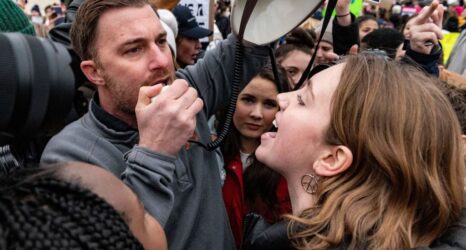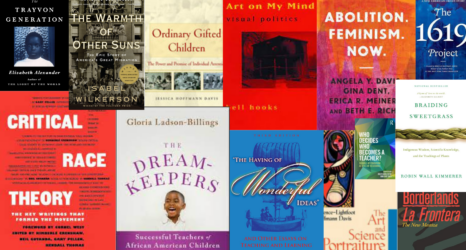When video surfaced recently of Deputy Ben Fields assaulting a young Black female student at Spring Valley High School in South Carolina, I was still absorbing the details of a disturbing conversation I’d had with young, Black, college-age women about rape culture and campus sexual violence. Despite the traumatic experiences relating to sexual assault that they or their friends and peers have experienced, not one felt they could report such incidents to the police.
Keep in mind that the students having this conversation are well aware of their rights, understand intersectionality through their own experiences as well as the various women’s and gender studies and ethnic studies courses that help contextualize these experiences, and are quite active in both Black Lives Matter and anti-sexual-violence movements. They are quite informed and conscious of how, when a police state intertwines with rape culture, certain men are empowered to touch, grab, fondle, manhandle, body-slam, drag and sexually assault women and people of color. And Black women and girls, whose lives violently bleed at these intersections, are aware of how vulnerable our bodies have been made in these structures of systemic violence.
Kimberle Crenshaw and the African American Policy Forum have rightly pointed our attention to the ways that Black girls are routinely “pushed out” of education through the school-to-prison pipeline. And Ta-Nehisi Coates recently reminded us of the long history of criminalizing Black people—especially Black resistance: from slavery (a system that penalized slaves who tried to run away or learned to read and write) to federal wiretapping of Civil Rights leaders. Intersectionality highlights how Black women and girls are equally assaulted under state violence—not just Black men and boys. And if Ida B. Wells-Barnett’s historical work on anti-lynching has taught us anything, it is that the brutal violence of our racist and misogynist/misogynoir systems, which gave us a police state and rape culture, are less concerned about “law and order” than they are about the submission and obedience of marginalized communities. If white male supremacy is to be “respected,” it will be through violence and fear.
For those who dare to “justify” Deputy Fields’ excessive use of force on this student, who—no matter what she was doing (chewing gum, texting or refusing to leave the classroom)—did not deserve to be body-slammed and dragged across the room, let us consider how quickly the student’s high school teacher would have been fired if he had behaved in a similar manner. We have taken corporal punishment out of the schools, and a new movement is encouraging parents to stop hitting their children, such as Stacey Patton’s “Spare the Kids” campaign. Yet, brutal violence is still being “normalized” by people who wear uniforms. Why is it acceptable for a police officer to act like a brute, yet we would not tolerate the same behavior from other authority figures, such as a teacher or school administrator? When did we decide that running our schools like a prison is a permissible way to socially condition our children, and Black children in particular?
And let’s talk gender difference here. If we removed the police uniform from the man and witnessed him body-slamming and dragging a teenage girl across the room, would we try to “normalize” this violence? This is where racial difference also comes into play: How easy would it be to question what the young Black girl did to “provoke” this violence if she were a different race or color? As Black women and girls, we cannot win.
If we “talk back” or verbally raise our objections—as Sandra Bland did when she was arrested in Texas, only to later die in police custody—we then become the “angry Black woman,” “mouthing off,” being “disrespectful” to authority. However, if we remain quiet, don’t “talk back,” but simply refuse to “do as we’re told,” as was exhibited by the Spring Valley High School student, this too “justifies” our mistreatment by police.
But in a misogynistic and racist society, which informs our rape culture and police state, we’re not supposed to win. The game is rigged, and we are designated “losers.” Individual resistance is promptly struck down, unless we mount collective resistance to a society that continues to normalize violence.
Here’s our situation: Sexual violence is still a volatile threat facing women and sexual minorities, with Black women and girls targeted at alarming rates. And yet, state violence compounds this problem by making police officers unreliable allies—worse, actual threats since their violence is equally as frightening as a rapist. There is also the under-discussed story of police officers who target Black women for sexual assault.
When police and rapists are on the same side of violence, what is a feminist to do?
Now is the time for feminists to question the various ways we have empowered the state to co-opt our language and movements—from the Violence Against Women Act (VAWA), which has yet to lock up more rapists but instead has led to more women getting swept up in the criminal justice system, to campus sexual assault policies that often place college reputations ahead of the interests of rape survivors. Now is the time to question how state violence works on behalf of rape culture, in which violent masculinity and aggression are widely celebrated when “undesirables”—from Black women and girls, men and boys, to other people of color and undocumented immigrants—are targeted for violence and oppression, while privileged women—white, cisgender, heterosexual and middle-class—are told how much “safer” they are when these targets receive the full force of state violence.
Yet, the recent Ms. Blog article connecting police officers with high rates of domestic violence demonstrates how one form of violence reinforces other forms of violence, how mass shooters are often times misogynistic and racist, and why not one of us is any safer as a result.
Despite all the collective angst over “angry Black women,” I’m reminded of Audre Lorde’s words: “It is not the anger of Black women which is dripping down over this globe like a diseased liquid. It is not my anger that launches rockets…slaughters children in cities, stockpiles nerve gas and chemical bombs, sodomizes our daughters and our earth.” It is not the anger of Black girls, who are being corralled into the school-to-prison pipeline, that produces mass school shootings, terrorist bombings and death threats. Instead, this anger is being mobilized for Black Lives Matter, for holding accountable those who would try to annihilate us and those who attempt to be our allies even when they get it wrong.
Nonetheless, we have an opportunity to use this anger—in the wake of this recent video capturing yet another case of police brutality (and if you’re not angry, please question why you aren’t: it’s a healthy emotion against injustice)—to question the normalization of all forms of violence and to dare to envision new ways of interacting with one another based on mutuality, respect, dignity and justice. We have the power, to reiterate Lorde, “to envision and to reconstruct, anger by painful anger, stone upon heavy stone, a future of pollinating difference and the earth to support our choices.”
Let us support all of our choices and raise up our youth to have different choices, young people who need our understanding and compassion, not our brute force and oppression, which never fosters respect but instead perpetuates a never-ending cycle of fear, dominance and dysfunction.
Get Ms. in your inbox! Click here to sign up for the Ms. magazine newsletter.
Screenshot from the video taken at Spring Valley High School





